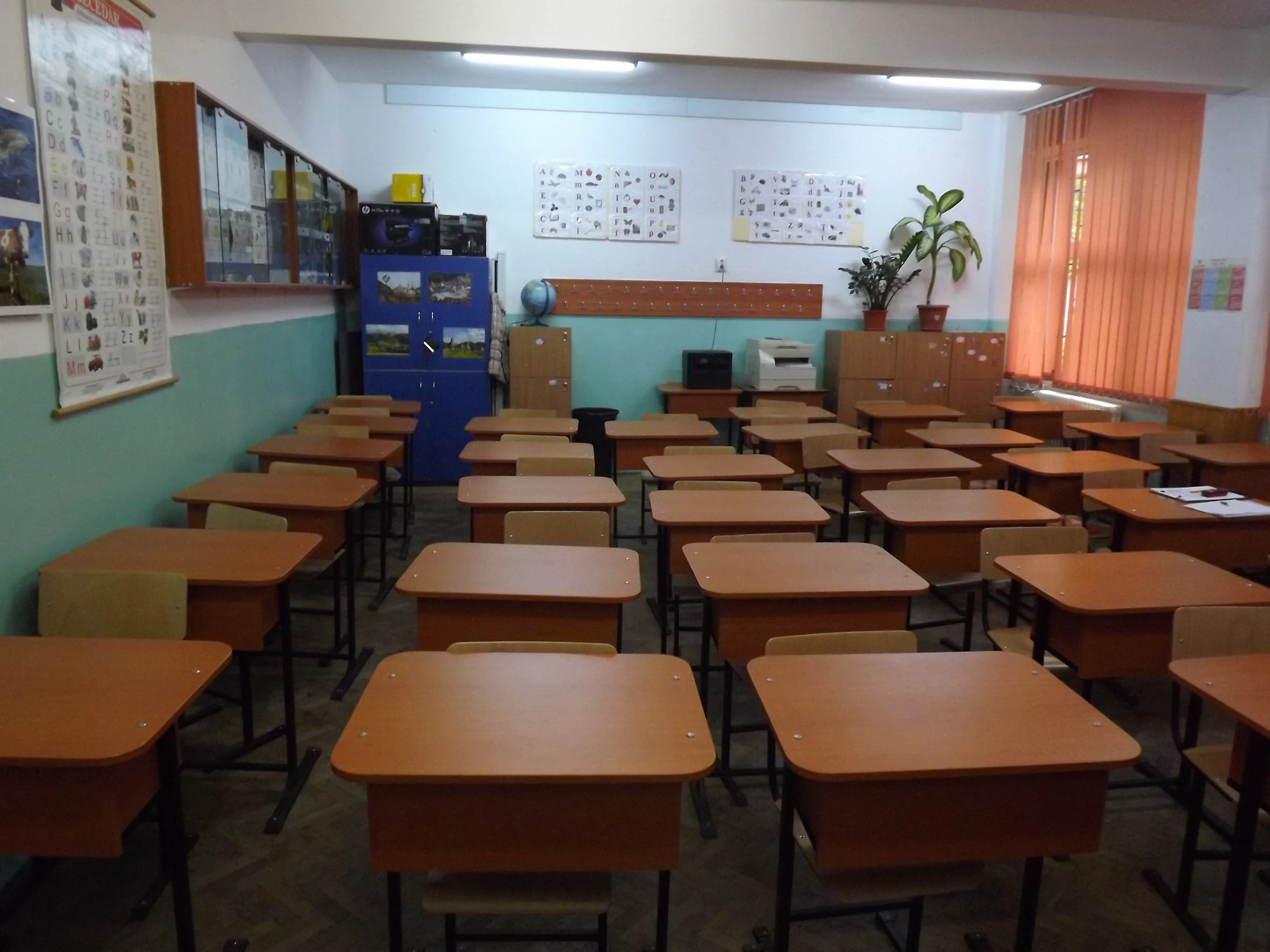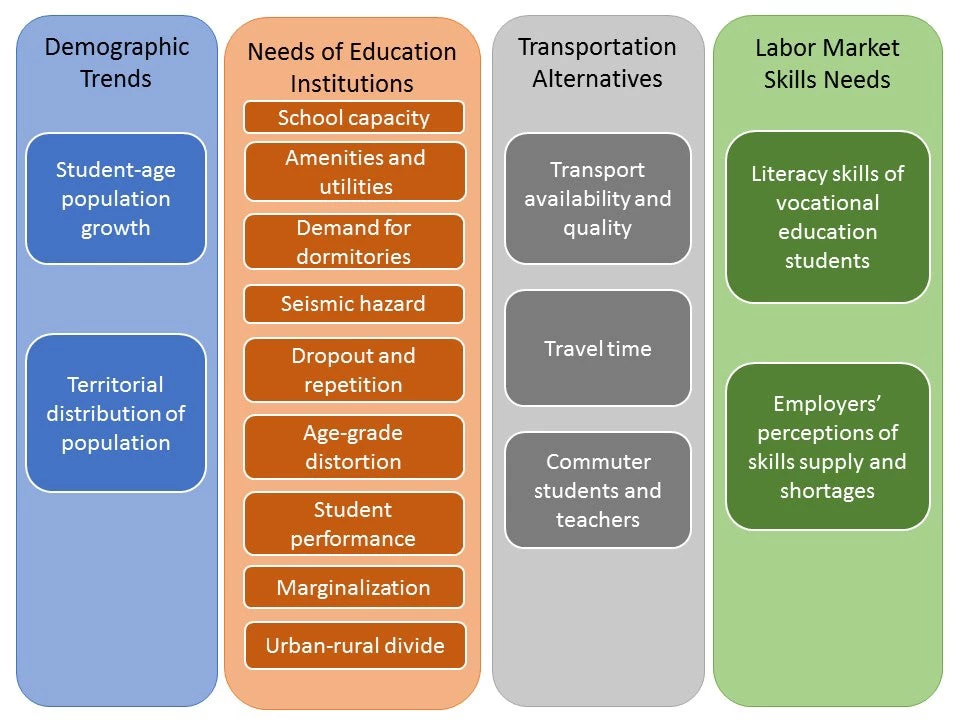
Buildings, classrooms, laboratories, and equipment- education infrastructure - are crucial elements of learning environments in schools and universities. There is strong evidence that high-quality infrastructure facilitates better instruction, improves student outcomes, and reduces dropout rates, among other benefits.
For example, a recent study from the U.K. found that environmental and design elements of school infrastructure together explained 16 percent of variation in primary students’ academic progress. This research shows that the design of education infrastructure affects learning through three interrelated factors: naturalness (e.g. light, air quality), stimulation (e.g. complexity, color), and individualization (e.g. flexibility of the learning space).
Although education policymakers are increasingly focusing on the quality of education and school learning environments, many countries use a fragmented or piecemeal approach to investing in their education infrastructure. In Romania, for example, decisions about education infrastructure investments have historically been made under an uncoordinated and decentralized model, driven by ad hoc needs and limited funding availability, rather than a strategic approach.
An ad hoc approach to infrastructure investment is problematic
Schools in marginalized areas in Romania face the biggest investment needs in the country, meaning that students attending these schools are doubly disadvantaged. These students come mainly from low income and rural families to attend poorly equipped schools. For instance, 72 percent of rural secondary schools are missing a science laboratory, and nearly 40 percent do not have indoor toilets. However, even though urban schools are better equipped than rural units, many are overcrowded. One in four students in urban areas attends an overcrowded school, many of which operate in shifts. Overcrowded classrooms, such the one below, are suboptimal for teaching and learning.

A different approach: What we are doing in Romania
A World Bank team has been working with the government of Romania on the issue of investing in education infrastructure for the last year, under a Reimbursable Advisory Services (RAS) program – the fourth in Romania’s education sector, since 2013. Through the RAS instrument, the World Bank can deliver flexible and customized technical advice, analytical services, and implementation support to its clients in middle and high-income countries.
In a nutshell, we are proposing a holistic and evidence-based model to inform decisions about investments in education infrastructure in the country. Four key steps have been taken since March 2016:
1. Data collection and analysis. Our team has been collecting and analyzing a vast and diverse amount of data on Romania’s education system. Such a broad data collection effort has never been done before in the country. In addition to Romania’s Education Management Information System, many other secondary sources were used to inform the analysis around four overarching dimensions: (i) demographic trends, (ii) needs of education institutions, (iii) transportation alternatives, and (iv) labor market skills needs (see diagram below).
Primary source data were also collected, e.g. on infrastructure conditions in nurseries and universities, and on skills demand and supply for vocational and tertiary education. The World Bank even collected data on environmental quality from a sample of Romanian classrooms, revealing that CO2 levels in Bucharest schools were two to five times higher than the accepted threshold for good air quality in schools.
2. Identification of challenges in education. An in-depth data analysis revealed broad as well as acute challenges that differ based on education level or geographic area. For example, Romanian localities with more students enrolled in overcrowded schools also have higher grade repetition, age-grade distortion and dropout rates, suggesting that poor learning environments and inadequate infrastructure negatively affects students. The RAS task team found, for instance, that there is a positive statistically significant correlation of 0.15 between age-grade distortion in upper secondary education and overcrowding.
The team also held widespread consultations across all eight regions of Romania. Because schools are closely tied to their communities, it was essential to engage local stakeholders directly in the process.
3. Development of a set of criteria to prioritize investments. As an EU member-state, Romania has access to funding outside state and local budgets for education infrastructure. It has access to the European Regional Development Fund and the European Agricultural Fund for Rural Development. Altogether, Romania has roughly €850 million (just over $ 1 billion) to invest in education infrastructure between now and 2023. This presents an incredible opportunity to address the large disparities in education infrastructure between Romania’s 19,000-plus education institutions that enroll more than 3.4 million students.
To assess and prioritize infrastructure funding proposals submitted by local governments, Romanian authorities needed clear criteria for each level of education. The World Bank developed and proposed such criteria according to the four analytical dimensions described above. By applying a transparent, data-driven, and holistic set of criteria, Romanian authorities will ensure that selected proposals strike an optimal balance between efficiency, equity, and sector-specific needs.
4. Monitoring the implementation of the new model. The final step is to monitor the application of the criteria in practice, as well as the allocation of funding for infrastructure investments. To support this, a geographical information system (GIS) is currently being developed with assistance from the World Bank task team.
Romania’s experience is relevant
Worldwide, as policymakers continue to shift their focus from access to quality, Romania’s experience shows how data and a multi-faceted model can be helpful to promote effective learning environments. In contexts with limited resources, competing demands, and unequal starting conditions, a holistic and data-driven approach is essential to keep the focus on the ultimate goal: improving the quality of education for all students.
See the World Bank overview on Education Management Information Systems.





Join the Conversation